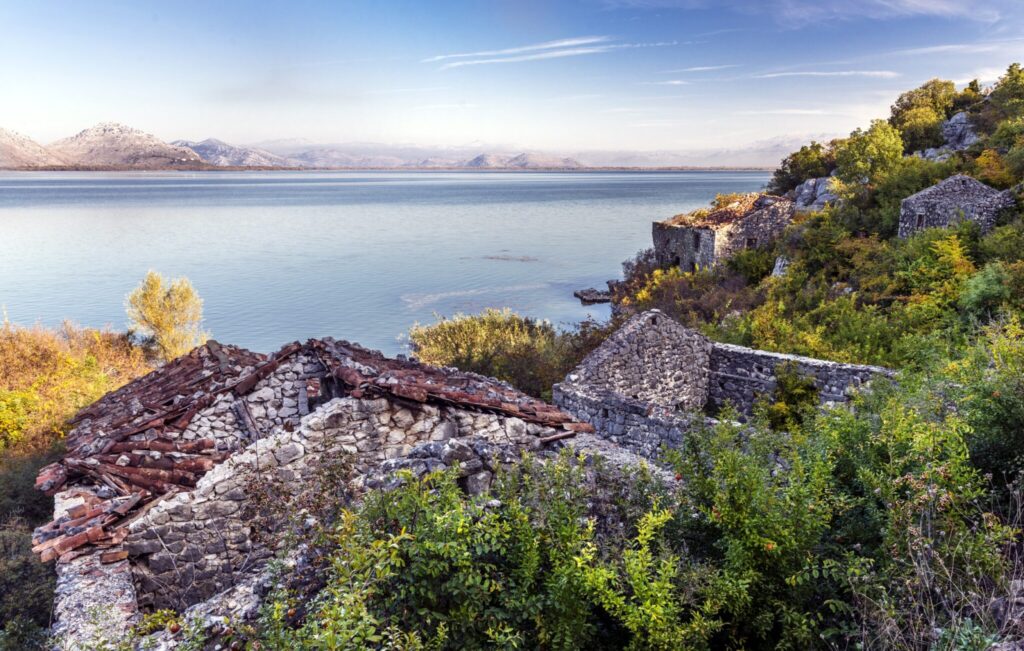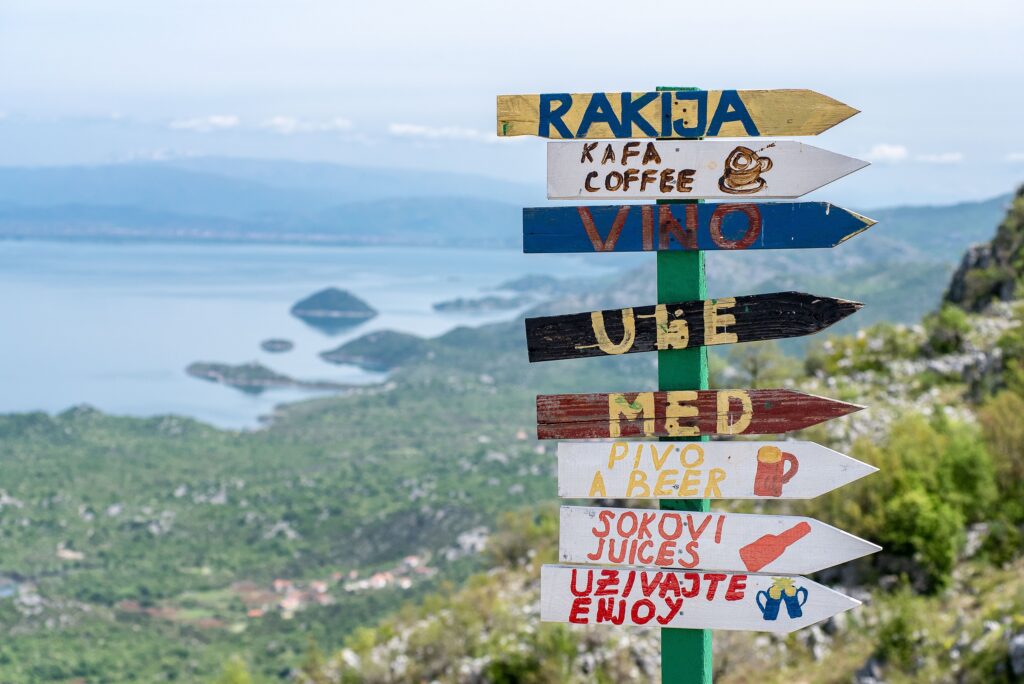Skadar Lake
The largest lake on the Balkan Peninsula. It has had the status of a national park since 1983.

Skadar Lake is located in the southeast of Montenegro, in a valley separated from the sea by Rumija mountain.
The lake is 50km long and 14km wide. Its surface area is not always the same. In spring and autumn when the water level rises, the surface area is about 500 km², while in summer at low water level it is about 350km².
The border with Albania is also located on the Lake. Montenegro owns 63.2% of the lake area. The coast is ragged, with numerous bays and picturesque fishing villages. It is 168km long, of which 110.5km belongs to Montenegro.
Skadar Lake has a rich history and culture, as evidenced by many archaeological sites, medieval monasteries and churches, fortifications and traditional architecture (fishing villages, old bridges, mills and wells).
The lake can be easily reached by the Podgorica – Bar/Petrovac road or the Podgorica – Bar railway.
Virpazar, the main and starting destination of the lake, is 28km away from Podgorica and 30km away from the Port of Bar.
There are many islands on the lake, popularly called gorice.
The viewpoints offer a unique view of the lake panorama with sandy beaches, chestnut forests and scattered islands.
Not far from Virpazar towards Krajina there are numerous bays with sandy beaches, the most famous of which is Murići beach, 560m long.


While driving on the local asphalt road along the lake shore, you can observe the lake and its surroundings, while the starting destination for cruising around the lake and visiting cultural and historical monuments is Vranjina and the quay in Virpazar.
Excursions – cruises on Skadar Lake are organized by boats.
Rich flora and fauna, cultural and historical monuments, picturesque settlements, as well as the opportunity to taste local specialties: carp, bleak, loza (grape brandy), famous Crmnica wine Vranac, are a unique experience. A special feature is the water caltrop, a plant with edible fruit, which can only be found on the lake.
Old olive and olive groves
The area of Bar is known for its olive trees, of which there are more than 100,000, and most of them are more than a thousand years old.

Olive trees can be found in almost the entire territory of Bar, while the majority of them are in Mrkojevići. They are mostly located in olive groves in the part of Komina near the coastal radio station, in Utjeha, in Ravanj from Veliki Pijesak to Pečurice through Dubrava, but also in Sutomore, in Miljevci, and in Šušanj, Dabanovo and Zaljevo. The oldest olive trees are in Komina, and there was a recent interesting case in Ravanj, where the entire olive grove was discovered, with about twenty ancient trees.
Bar is known throughout the Balkans and Europe for the trees like the Old Olive Tree. Bar olive trees contribute to the environmental value, and Bar olive groves have been declared one of the most beautiful environments in Montenegro.
There is an interesting story about the olive groves of Bar – no young man could get married without first planting a certain number of olive groves. Back in 1927, there was the “Brothers Marić’s Oil Production Plant” in Stari Bar, where up to 20 tons of olives were processed daily and the famous Bar oil was produced and exported to the US, France and Germany.
The Old Olive Tree
The symbol of Bar is the oldest tree in Europe, which is 2,240 years old.
It is located in the Mirovica settlement, on the fifth kilometre from Bar to Ulcinj. This natural monument is older than any written monument about Bar and its inhabitants. The Old Olive Tree on Mirovica is a natural monument protected by law in 1963. The circumference of the tree is 10m.
According to the legend, conflicted families gathered around the olive tree to reconcile.

Džidžarin is one of the largest, most beautiful and most valuable olive groves in Bar. It cannot be reached by car, but only by walking over the old cobblestones that lead through the olive groves. The path is suitable for horses and donkeys, used for transporting harvested olives and transferring agro-technical equipment.
The Bar Olive Growers Association has labelled this complex as “Olive Paths”, where tourists can visit this natural treasure of ours, which is located a few hundred meters from the walls of the Old Town. The monumental and environmental value of Džidžarin, together with the remains of the old town of Bar, stone bridges and mills, is one of the most interesting tourist micro-units in Bar.
During the construction of the olive grove path in Džidžarin in 2016, the remains of a medieval church – a chapel were discovered, hidden in a pile of wild plants, land and oblivion. It is believed to have originated in the 13th century and was dedicated to St. Urban.
Vineyards and wine cellars
In the villages in the Skadar Lake region, the tradition of wine production is over 500 years old.

Crmnica is the home of Vranac and the most famous wine-growing region, with the longest tradition of wine production in Montenegro. There are numerous vineyards in the villages along Skadar Lake and on the slopes of Sutorman, Sozina, Rumija and other Bar mountains. Local wineries have a long family tradition in the production of Vranac – an autochthonous Montenegrin wine variety. Vranac vines are planted on specific terrains with stepped terraces and stretch from 270m to 700m above sea level.
In the authentic ambience there are wineries where you can taste top wines and specialties of local cuisine, learn about customs, enjoy the natural beauty and cultural and historical attractions.


